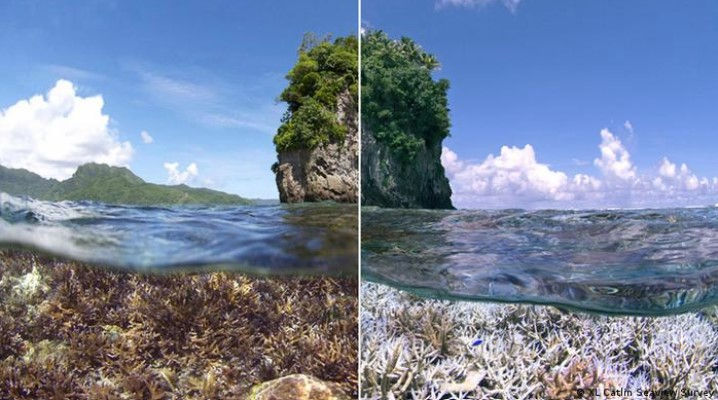The state of our coral reefs
- Alaya Laubsch
- Dec 7, 2021
- 3 min read

Coral reefs are vanishing at an alarming rate all across the world, facing severe threats that have resulted in a significant loss of species and territories. This is a result of warming waters, pollution, ocean acidification, overfishing, and physical destruction.
More than 100 countries throughout the world are home to coral reefs, which are often located in shallow, tropical seas. They support some of the most biodiverse ecosystems on the planet and are home to thousands of different marine animals. These include species of sea turtles, fish, crabs, shrimp, jellyfish, sea birds, starfish, and more. Reefs provide shelter from predators and are essential spawning grounds, providing support for species at the bottom of the food chain. Some of our planet's reefs have been developing for more than 50 million years, although most of the substantial coral reefs found today are between 5,000 and 10,000 years old. Coral reefs take up less than one percent of the ocean's surface, but despite their small size, they are among the most abundant and diverse ecosystems on the planet. They are sometimes referred to as "the rainforests of the sea" and are the primary habitat for more than 4,000 species of fish and 700 species of coral.
Climate change is the leading cause of coral bleaching. When the water temperature is too high, corals eject the algae (zooxanthellae) that live in their tissues, resulting in the coral becoming entirely white. Although the coral is not dead, it is put under greater stress and is more vulnerable to death. This is because the corals and algae have a symbiotic relationship, where they depend on each other to survive. The algae provide food for the coral and is responsible for its vibrant color. Because of rising water temperatures or pollution, the symbiotic relationship between the algae and the coral gets challenged, where the coral gets stressed and causes the algae to leave. Without algae, the coral loses its primary source of nutrition, and it turns white or very pale, making it more prone to illness. Even a little increase in the water temperature, as low as 2 degrees Fahrenheit, can trigger corals to force algae out of their habitat. Other factors, such as unusually low tides, pollution, or too much sunshine, can cause coral to bleach as well. Once these corals die, reefs are unlikely to recolonize. Due to the limited number of corals that survive, they are unable to reproduce, and entire reef ecosystems, on which humans and wildlife are dependent on, collapse.
Coral reefs support an estimated 25 percent of all marine life, and now that they are collapsing, already endangered species are at risk of extinction. Approximately half a billion people across the world rely on reefs for food, employment, and coastal defense. Coral reefs operate as barriers, where they limit wave energy by up to 97 percent, offering critical protection against hazards such as tsunamis. They also contribute to the preservation of habitats such as mangrove forests and seagrass beds, which serve as nurseries for marine animals and human coastal communities. Today, 75 percent of the world's coral reefs are at risk due to human activity and about a quarter of them have already been damaged beyond repair. Over 50% of the world's coral reefs have died in the last 30 years, and it is possible that up to 90 percent of them may die within the next century.
Sources:






Commentaires